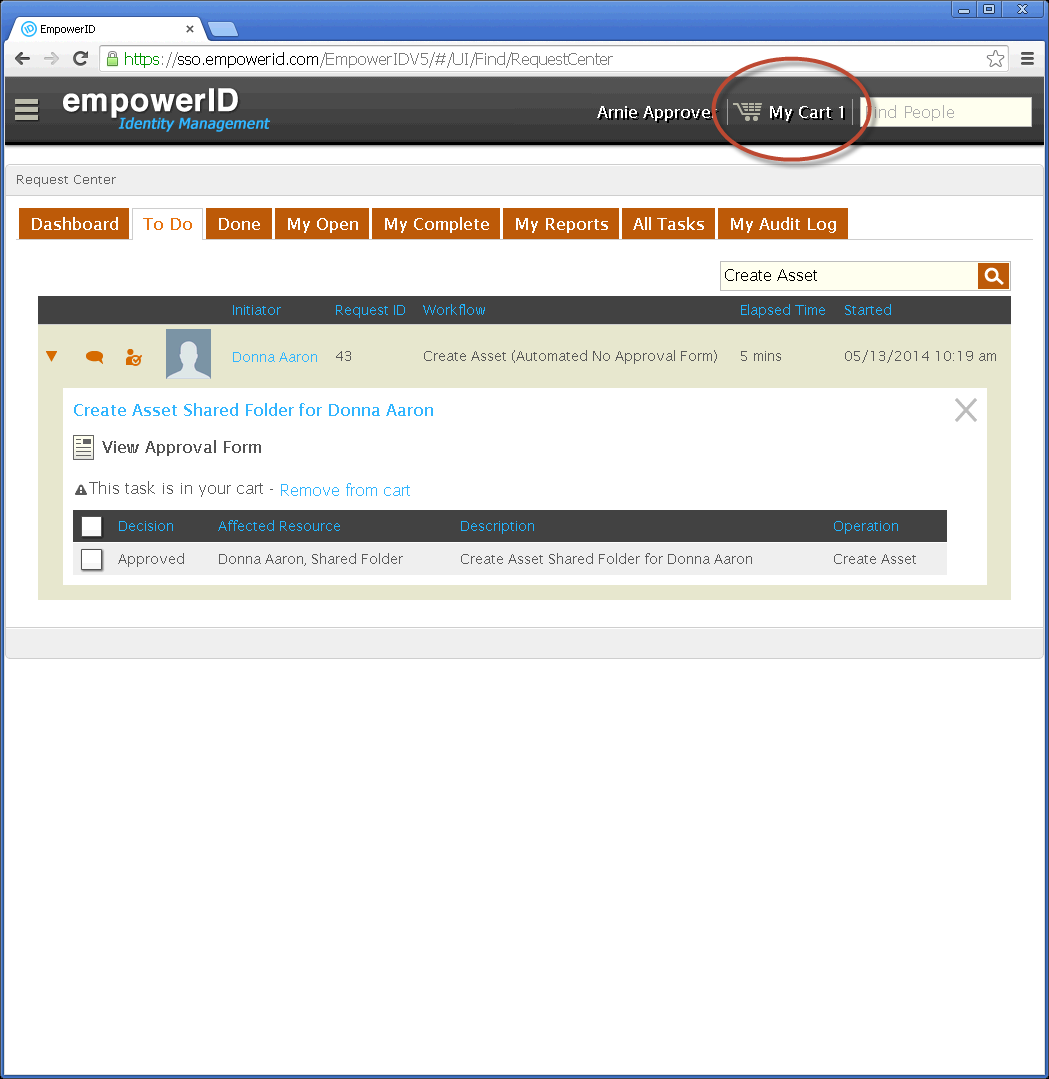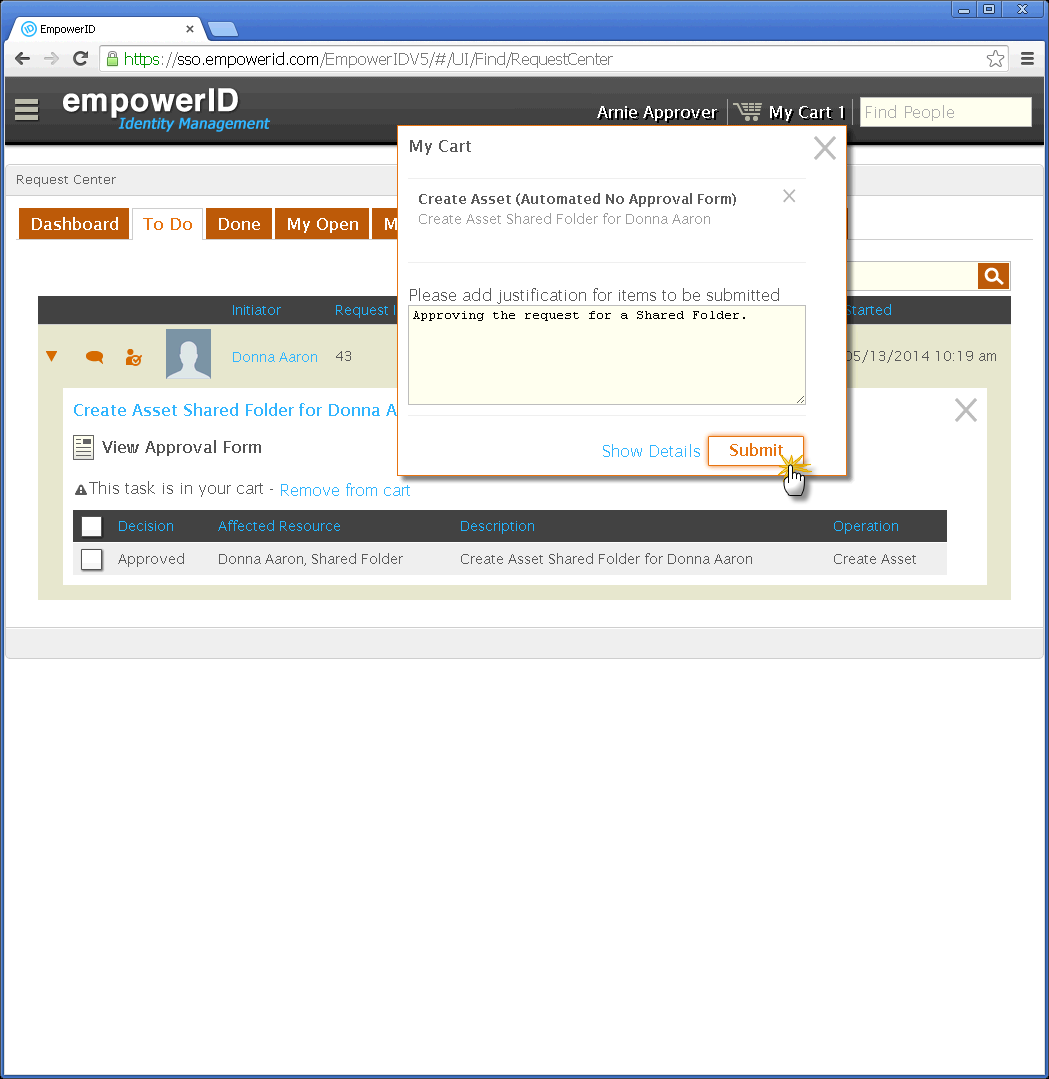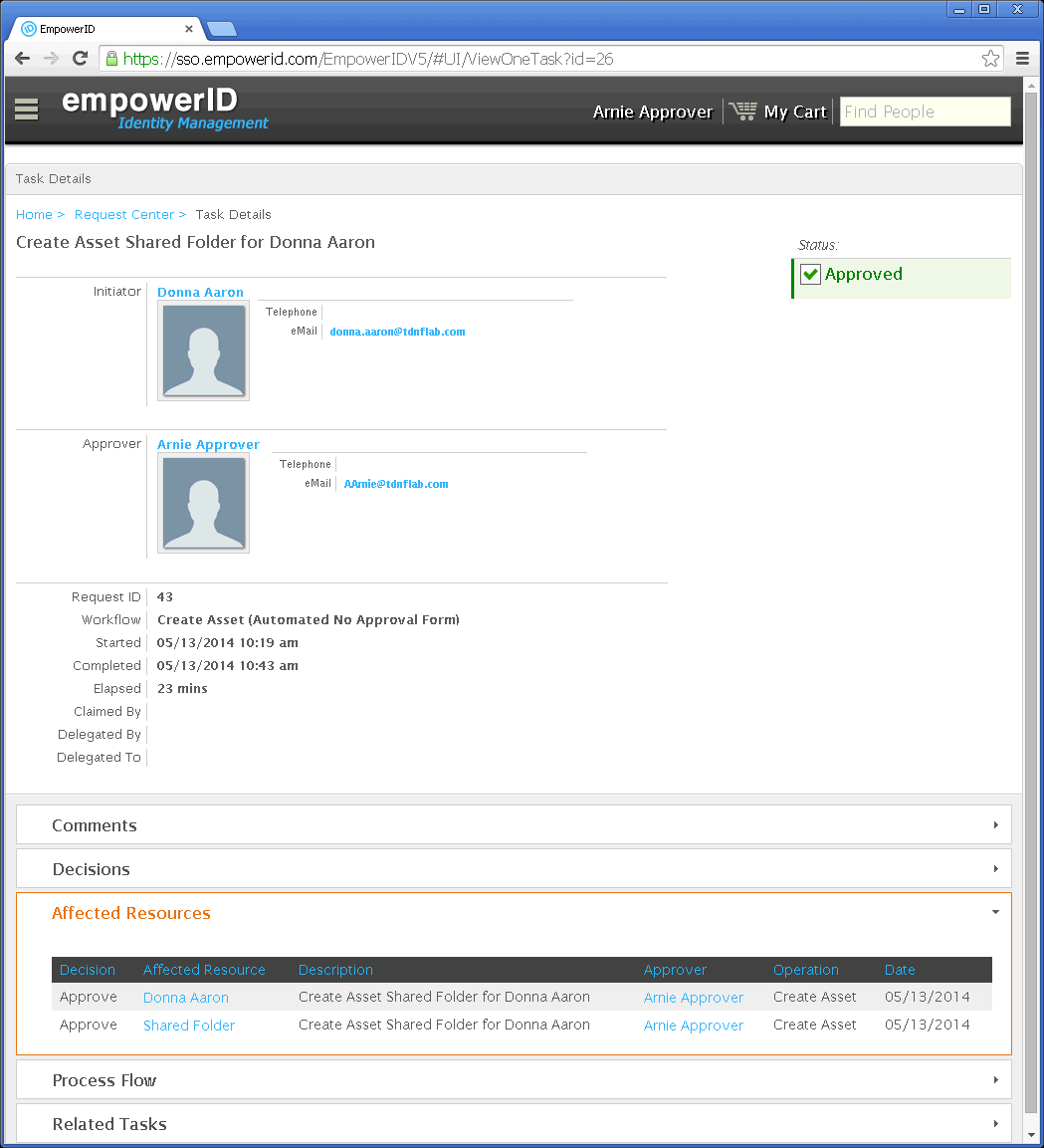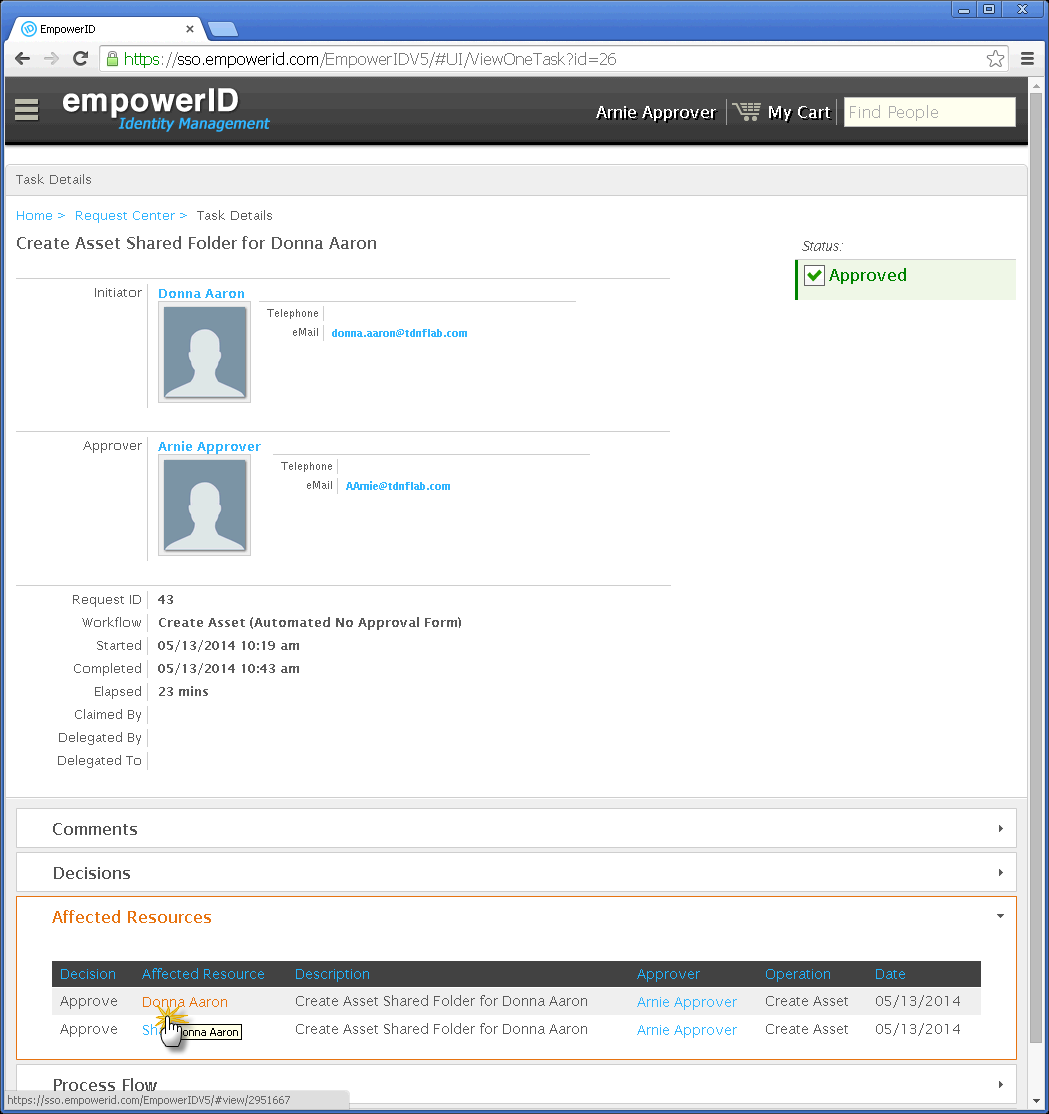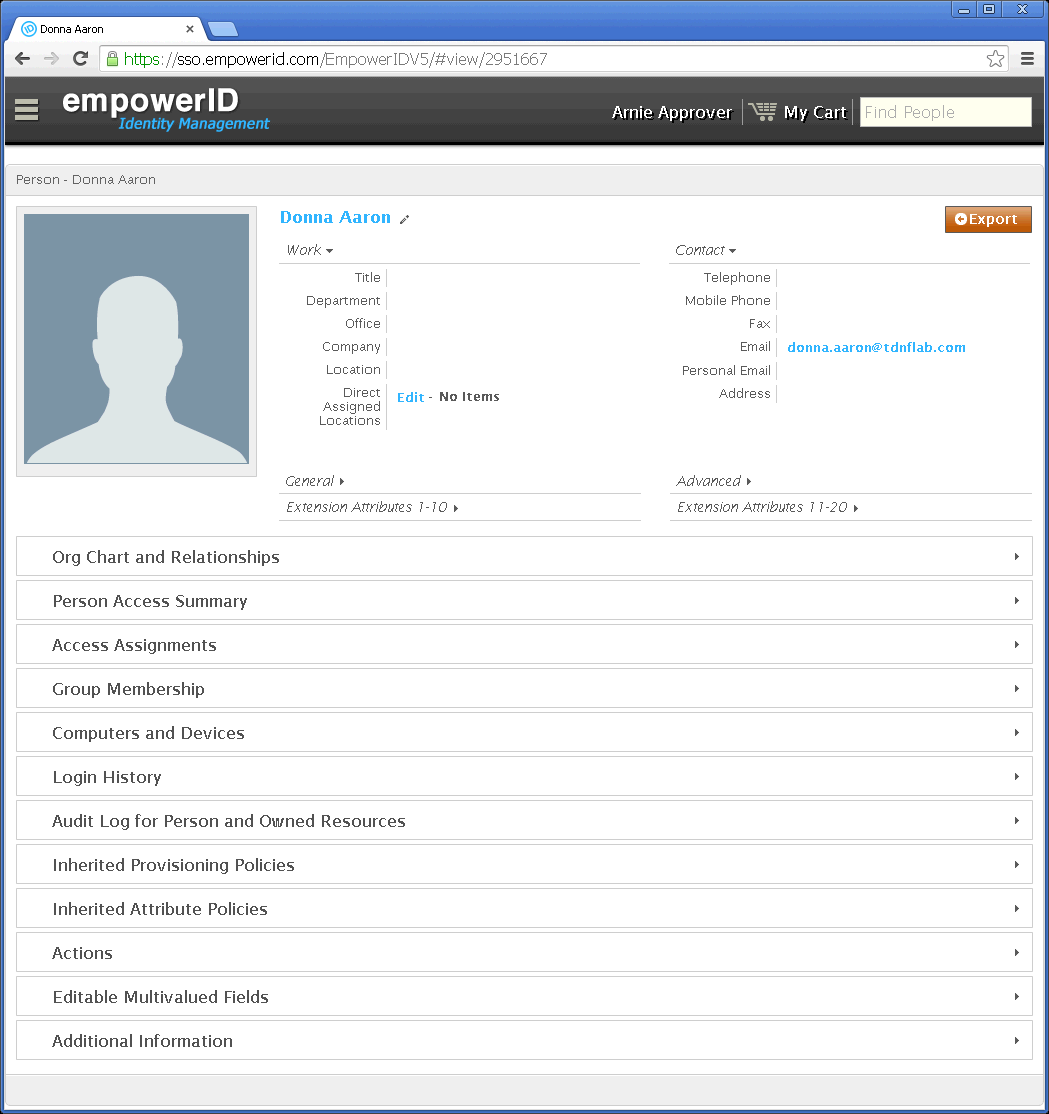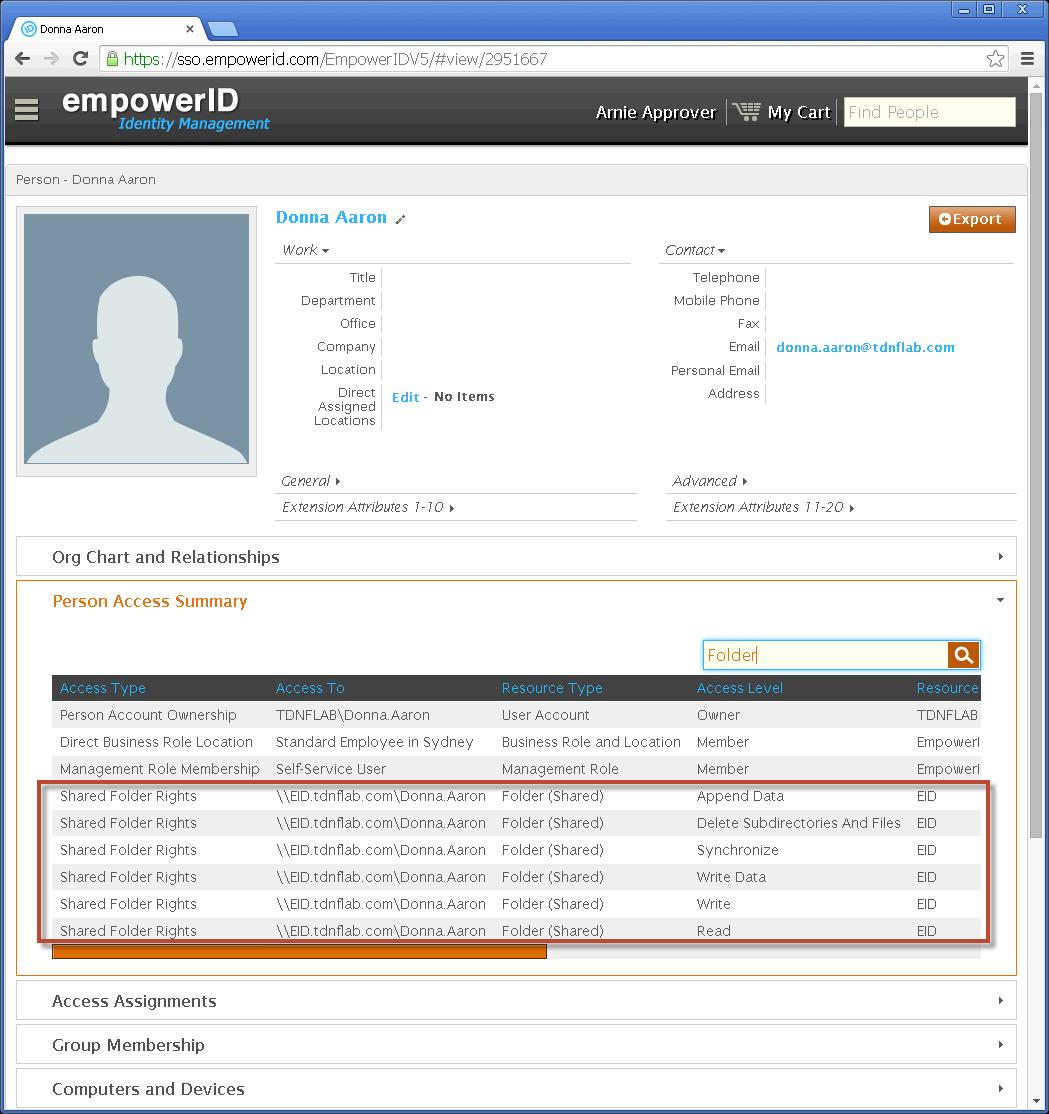You are viewing an earlier version of the admin guide. For the latest version, please visit EmpowerID Admin Guide v7.211.0.0.
Provisioning Asset Requests
When users request an asset from the IT Shop, EmpowerID routes the request to an designated approver, such as the Access Manager for that asset. In order to provision the asset, that approver must approve the request.
This topic demonstrates how to provision an asset from an Asset Request.
To provision an asset from an Asset Request
- Log in to the EmpowerID Web application as an administrator or person with the ability to approve the Asset Request (Access Manager for the Asset Request).
- In the navigation sidebar, expand Tasks and Requests, then Workflow Tasks, and click Tasks To Do.
- Search for the Create Asset workflow.
- In the Search Results grid, click the drop-down arrow to the left of the Asset Request and select Approve from the Decision drop-down.
This adds the approval to the Shopping Cart. - Click the Shopping Cart and in the My Cart dialog that opens, enter a reason for the approval and click Submit.
To verify that the asset was provisioned
- From the Request Center, click the drop-down arrow to the left of the request and click the link for the Asset Request you approved.
This directs you to the Task Details page for the request. From this page you can view all relevant information about the asset request. In the below image, we have expanded the Affected Resources accordion, which allows us to view the details of all resources affected by the task.
From the image, we can see that two resources were affected, the Person Donna Aaron (she now has a home folder) and the Shared Folder Asset Request (it was used to provision the home folder).
- Verify that the person has the shared folder by clicking the link for the person in the Affected Resources accordion.
This directs you to the View page for the Person. - From the View Page, expand the Person Access Summary accordion and verify that the Person has been given rights to the shared folder.
- Locate the parent shared folder where home folders are provisioned and verify that you see the home folder for the Person.

